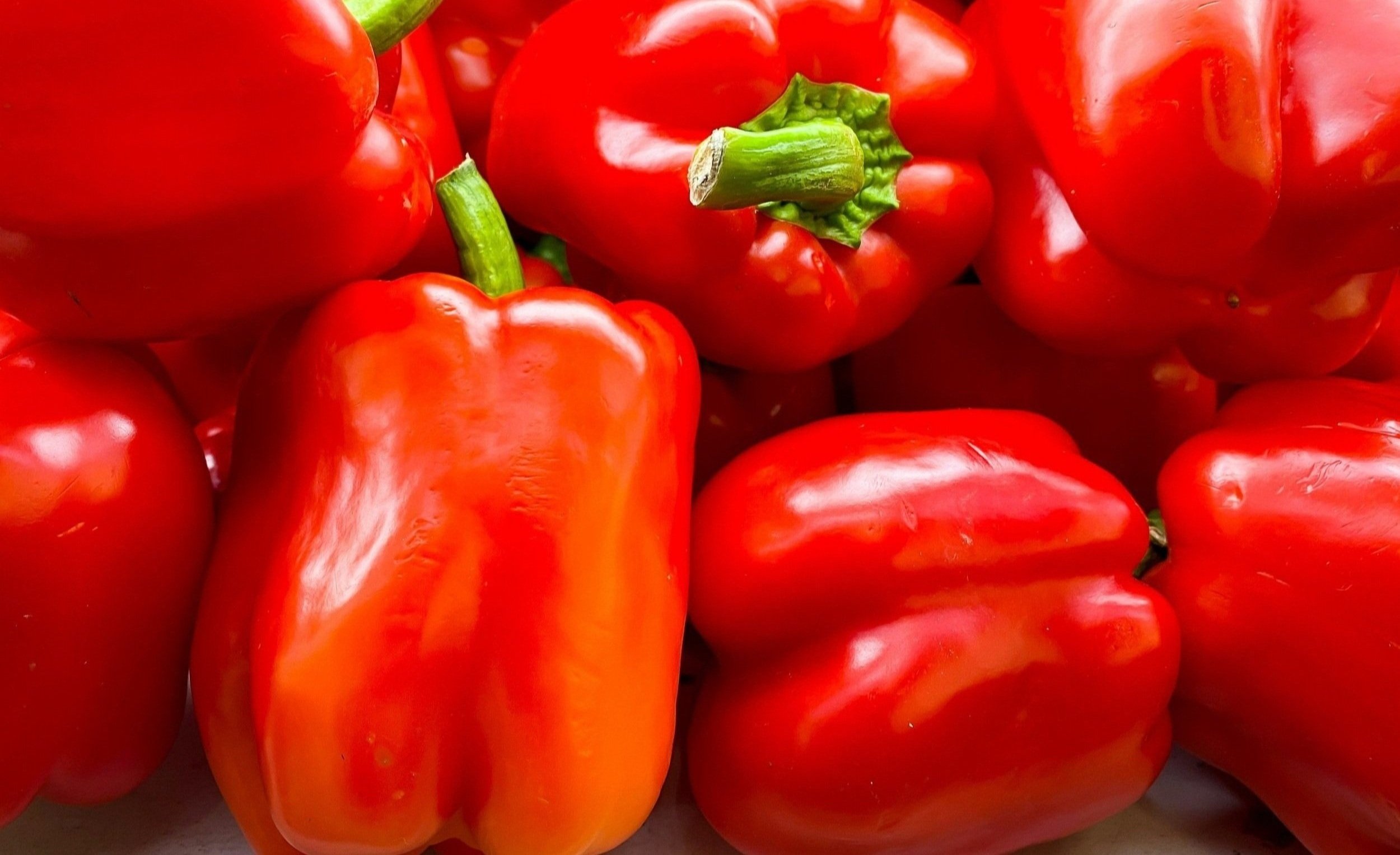
FACT FILE: CAPSICUMS
Capsicums (also sometimes called bell peppers) are highly versatile, and can be enjoyed raw or cooked in many different ways! Check out our stuffed capsicums recipe for a simple, flavourful meal. Read on for information about its health benefits, key phytonutrients, and suggestions for cooking, usage and storage.
-
Red capsicums are usually the sweetest of the different coloured varieties. They also come in green, and yellow.
All have crisp, moist flesh, hollow with a seeded core.
Green varieties are less sweet and slightly more bitter than other colours of capsicum.
Capsicums belong to the Solanaceae (nightshade) family, which also includes potatoes, tomatoes and eggplants.
-
Cooking and eating capsicums with fat or oil increases carotenoid absorption.
We recommend microwaving and stir-frying without using water for capsicums, to ensure the maximum retention of anti-oxidants including vitamin C and Vitamin A-producing carotenoids.
Add capsicums to stir-frys, or slice raw and dip into hummus, butter bean or pesto dips.
Red and green capsicums are often used in Asian cooking.
Capsicum is a great addition to a raw vegetable platter, not only do they add a brilliant splash of colour, but their texture is also the perfect crunchy complement for dips.
Cooking has not been shown to reduce the content of key nutrients below 10% of the RDI per serve, although keep cooking times short to minimise losses.
-
Fruit should be firm with a uniform shape, size and colour typical of the variety.
Fruit should be free from defects such as cracks, decay and sunburn.
Storage at 7.5°C is best for maximum shelf-life (3-5 weeks); storage at lower temperatures (i.e in the fridge) can cause chilling injury.
Capsicum peppers can be stored at 5°C for 2 weeks, and although this reduces water loss, chilling injury will begin to appear after that period. Symptoms of chilling injury include pitting, decay, discolouration of the seed cavity, softening without water loss.
Ripe or red/yellow coloured capsicums are less chilling sensitive than green peppers.
-
As a source of folate, Vitamin A and Vitamin B6, and good source of Vitamins C (Ascorbic Acid) and E, one serve (75g) of red capsicum contributes to:
A healthy brain and nervous system.
A healthy heart and circulation.
A healthy immune system.
Normal, healthy skin.
For more information check out www.veggycation.com.au.
-
One serve of Red Capsicum is 75g, which is about ¾ of a standard sized capsicum. This quantity of red capsicum provides:
A source* of Folate
A source* of Vitamin A (from beta-carotene)
A source* of Vitamin B6, a water-soluble vitamin that helps your body form red blood cells and maintain brain function. This vitamin also plays an important role in the proteins that are part of many chemical reactions in your body. Large amounts of vitamin B6 are lost during most forms of cooking and processing.
A good ** source of Vitamin E, a fat-soluble vitamin; bio-availability of Vitamin E will improve with the addition of oil or butter when cooking.
A good** source of Vitamin C (Ascorbic Acid), a water-soluble vitamin that is lost with cooking and long storage duration.
Green capsicums are a good ** source of Vitamin C (Ascorbic Acid).
*A source means one serve provides at least 10% of the Recommended Daily Intake, or at least 2g in the case of fibre.
**A good source means one serve provides at least 25% of the Recommended Daily Intake, or at least 4g in the case of fibre.
Green capsicums have a very high content of the phytonutrient lutein, which is a carotenoid linked with eye health. This is a fat-soluble phytonutrient.
Red capsicums have a very high content of the phytonutrients beta-carotene and beta-cryptoxanthin, both carotenoids that have been shown to be active anti-oxidants. Beta-carotene is a precursor for Vitamin A, a conversion that happens in our bodies.
